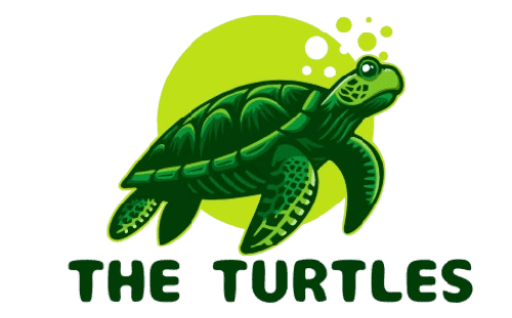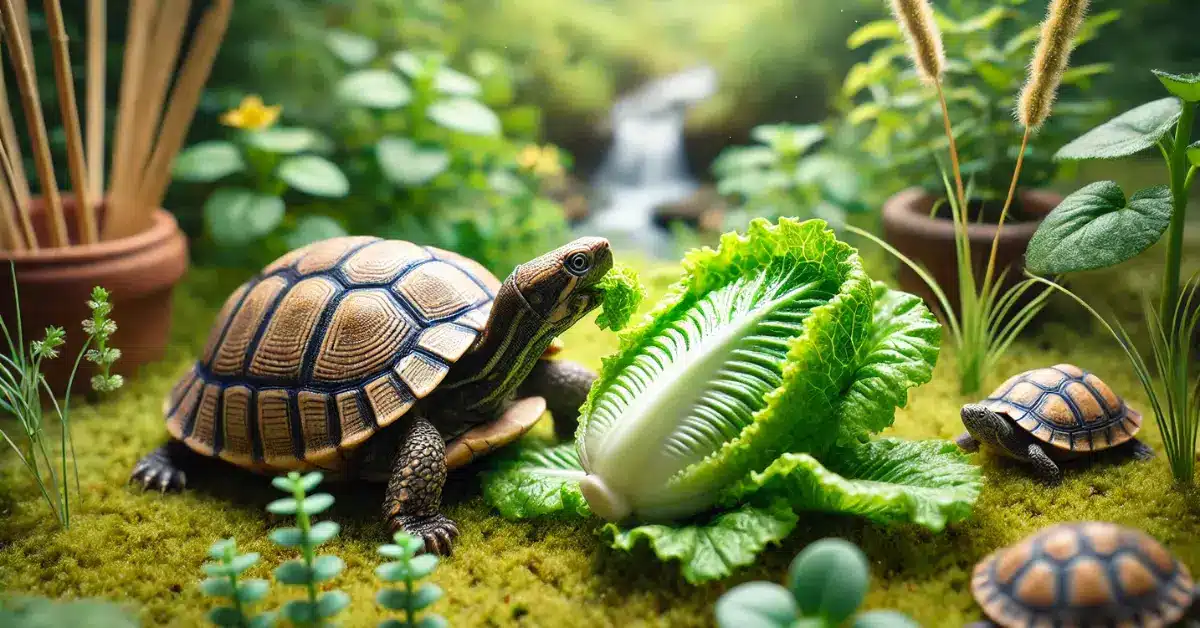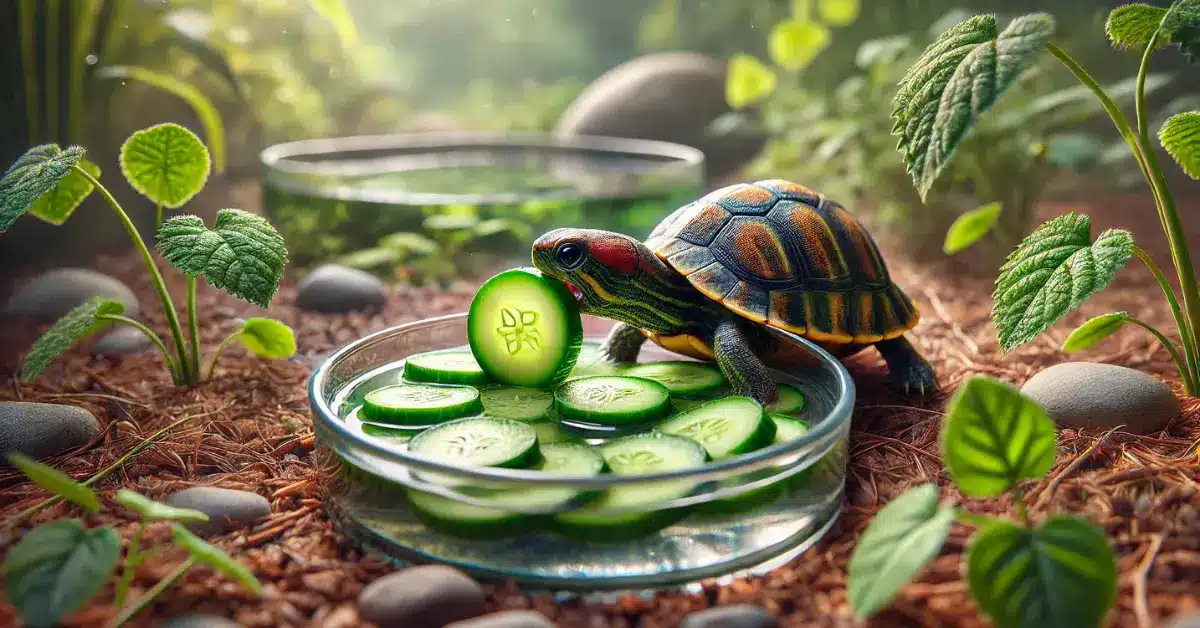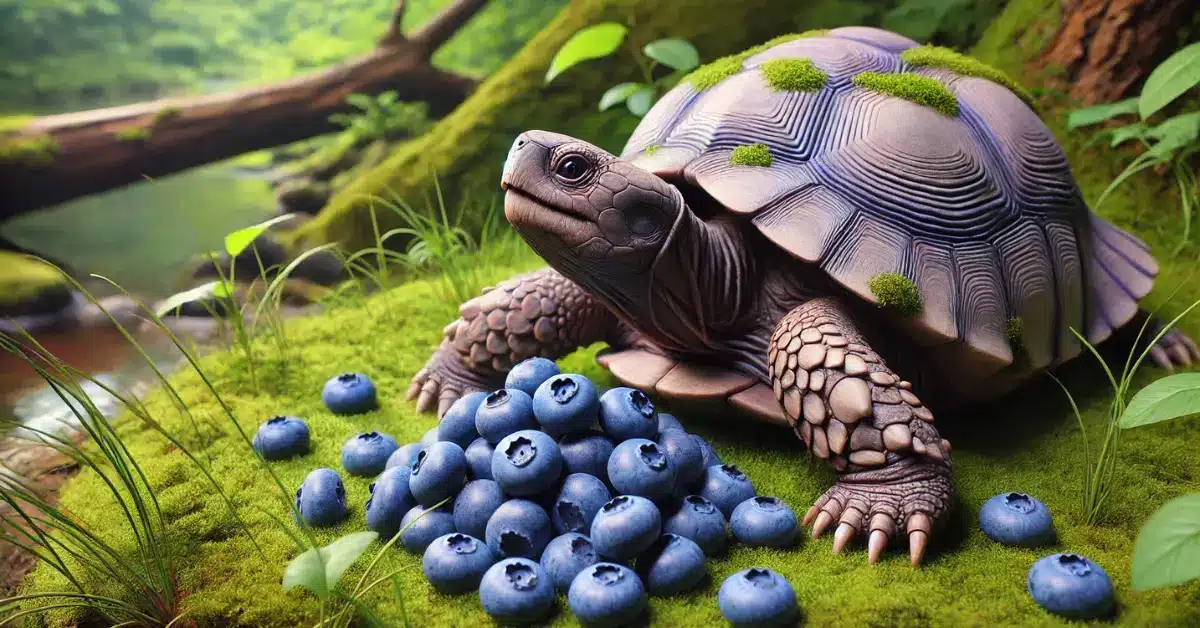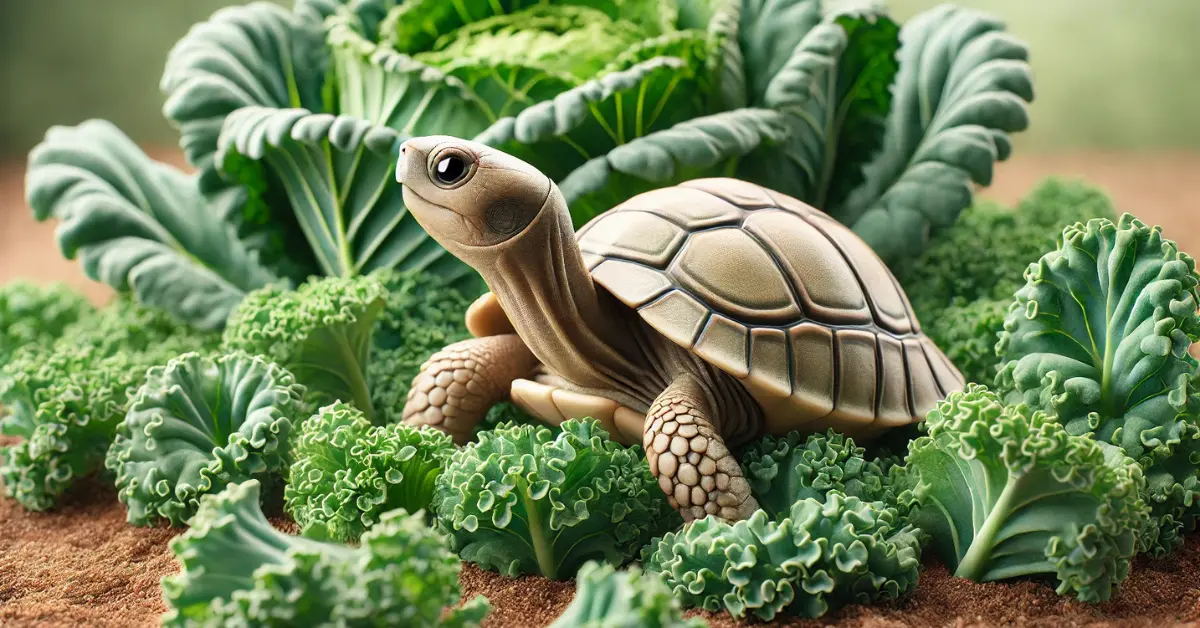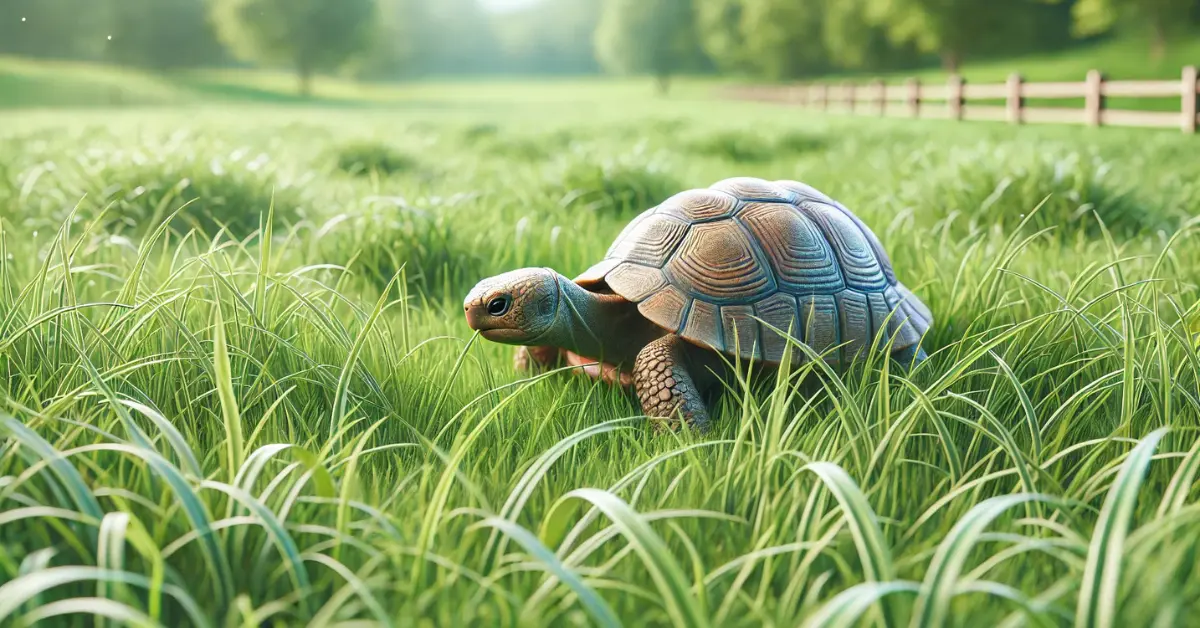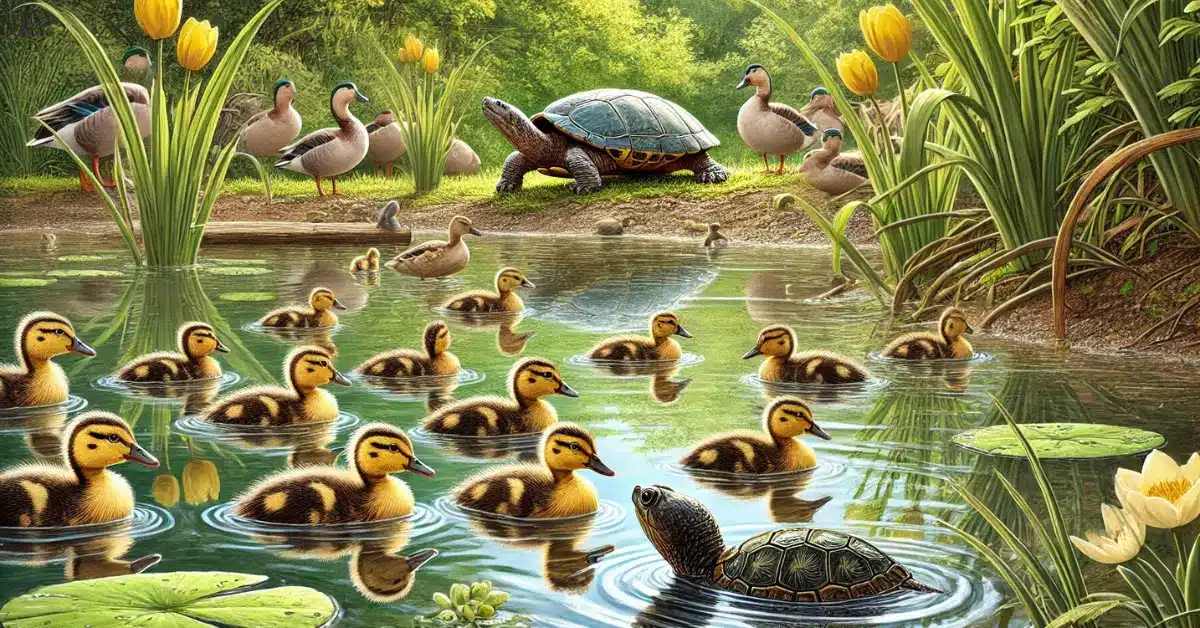Table of Contents
ToggleWhat Is the Difference Between Turtle and Terrapin?
When you wander along a riverbank or paddle through a calm lake, you might spot some shelled friends basking in the sun. Turtles and terrapins are often around, soaking up rays and looking pretty similar at first glance. But, what sets them apart? Let’s dive into this fun exploration, clear up some common confusions, and make sure next time you can tell whether it’s a turtle or a terrapin you’re waving at!
What Exactly Is a Turtle?
Turtles are remarkable creatures that belong to the family of reptiles. They carry their homes on their backs and have a hard shell that protects them from predators. Turtles are versatile; they live in oceans and seas, but some also thrive in freshwater. The key point? They are primarily aquatic, spending most of their life in the water, although they do come ashore to lay eggs.
What Constitutes a Terrapin?
Now, terrapins are a bit of a mix when it comes to habitat. These guys are semi-aquatic, which means they split their time between water and dry land. Typically found in swampy, brackish waters — a mix of salt and fresh water — terrapins are known for their ability to adapt to less than crystal clear environments. This makes them unique among their shelled relatives.
The Tortoise in the Room: A Quick Clarification
While we’re sorting out the differences, let’s not forget about tortoises. Often lumped together with turtles and terrapins, tortoises are land-dwellers. They have a different body structure, with sturdier legs and a more dome-shaped shell, tailored for a life away from water. Knowing this, it’s easy to keep them out of the aquatic confusion!
Difference Between Turtle and Terrapin and Tortoise?
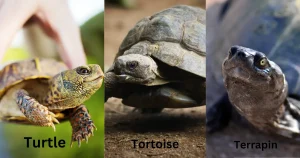
Have you ever wondered about the differences between turtles, terrapins, and tortoises? They might look similar, but they live in different places and have their own unique traits. Let’s explore what makes each of them special and correct some common mix-ups along the way!
What Makes Each One Unique
- Turtles: Turtles are great swimmers with webbed feet or flippers. They have sleek shells that help them move through the water quickly. Some turtles are pretty big, with the largest ones as long as a small car!
- Terrapins: Terrapins have webbed feet with claws and a shell that’s a bit rough, perfect for life in water and on land. They’re smaller than turtles and can move around easily on both land and in water.
- Tortoises: Tortoises have heavy, rounded shells and short, sturdy legs made for walking on land. They eat plants and can live a really long time—over 150 years!
Where They Like to Live
- Turtles: You’ll find turtles in the ocean or in lakes and rivers. Sea turtles love the ocean, and freshwater turtles enjoy living in rivers and ponds.
- Terrapins: Terrapins like places where the water is a mix of salt and fresh, like estuaries or mangrove forests. They’re good at living both in the water and on the muddy shores.
- Tortoises: Tortoises enjoy dry places like deserts or damp forests. They’re land animals, so you won’t find them in the water.
Their Family Tree
Turtles, terrapins, and tortoises are all part of the same big family and started out with the same ancient ancestor over 200 million years ago. Even though they’ve gone their separate ways, adapting to different types of homes, they share a common family history.
Clearing Up Some Myths
- Myth: All these animals can switch places and live in each other’s homes.
- Truth: They each need specific conditions to be healthy and happy. Moving them can make them sick.
- Myth: They can all hide completely inside their shells.
- Truth: Most can pull in a bit, but how much they can hide varies a lot.
- Myth: Turtles and tortoises are always slow.
- Truth: Turtles can swim really fast, and terrapins can hustle when they need to, though tortoises do tend to take it slow on land.
Where They Live: Their Habitats
Turtles: Experts in Water
Turtles love water! Most sea turtles hardly ever leave the ocean, except when females come onto the beach to lay their eggs. Freshwater turtles enjoy lakes and rivers and often bask in the sun on logs or rocks near the water.
Terrapins: Lovers of Mixed Water
Terrapins find their homes in brackish waters, where rivers meet the sea. This kind of water is a mix of salty and fresh, which you can find in estuaries or near mangroves. Terrapins are great at living in these changing conditions.
How Their Homes Shape Their Bodies
Turtles, terrapins, and tortoises have bodies that match their homes. Turtles have sleek shells and flippers for swimming. Terrapins have sturdier, rougher shells and claws to help them get around both water and land.
What They Look Like: Their Physical Traits
Shells: Different Shapes for Different Lives
Turtles have smooth, streamlined shells for swimming fast. Terrapins have bulkier shells for protection on land and in water. Tortoises have big, dome-shaped shells that keep them safe from predators on land.
Legs and Feet: From Flippers to Claws
Turtles have flippers to swim through the water easily. Terrapins have webbed feet with claws, perfect for holding onto wet and dry places. Tortoises have strong, thick legs good for walking on land and not for swimming.
Heads and Necks: Long or Short
Turtles and terrapins can pull their necks into their shells a bit, especially when they feel scared. Tortoises have shorter, tougher necks that fit their heavier shells and heads.
Size: Big Turtles and Smaller Terrapins
Turtles can get really big, some as heavy as a small car! Terrapins are much smaller, which makes it easier for them to move quickly on land and in water.

Behavioral Traits of Turtles, Terrapins, and Tortoises
Now that we know where these creatures live and what they look like, let’s explore how they behave. From what they eat to how they interact with each other, each has its own set of behaviors that are fascinating to learn about.
Feeding Habits and Dietary Preferences
- Turtles: Many turtles are omnivores, which means they eat both plants and animals. Sea turtles like the green turtle mostly eat seaweed and algae, while others might munch on jellyfish, crabs, or even small fish.
- Terrapins: Terrapins usually eat a mix of plant and animal matter. Their diet can include fish, snails, worms, and aquatic plants. They are not picky eaters and will take advantage of whatever food sources are available in their brackish water homes.
- Tortoises: Most tortoises are herbivores, eating mostly plants. They love munching on grass, leaves, and sometimes fruits. Some tortoises have been known to eat insects or other small animals, but this is less common.
Mating and Reproductive Behaviors
- Turtles: Turtles often travel long distances to mate and lay eggs. Sea turtles return to the same beaches where they were born to lay their eggs in the sand, a journey that can span thousands of miles.
- Terrapins: Terrapins mate in the water, and females lay their eggs on land, often in sandy or muddy nests near their aquatic homes. They don’t travel as far as sea turtles but are very protective of their nesting sites.
- Tortoises: Tortoises mate on land, and females lay their eggs in burrows they dig themselves. These eggs are left to incubate in the warmth of the sun, and the young are on their own once they hatch.
Basking and Temperature Regulation
All these reptiles are cold-blooded, which means they rely on their environment to regulate their body temperature.
- Turtles: You’ll often see turtles basking in the sun on logs or rocks. This helps them warm up their bodies to be more active during the day.
- Terrapins: Like turtles, terrapins also bask in the sun. They need to be careful, though, as they can overheat or become too cold if they don’t move back to the water at the right time.
- Tortoises: Tortoises also bask in the sun to get warm. In very hot weather, they might dig themselves into the ground to stay cool or hide under vegetation to escape the heat.
Social Behaviors and Interactions
- Turtles: Sea turtles are mostly solitary, except when they mate or when hatchlings emerge together. Freshwater turtles can be more social, sometimes seen basking in groups.
- Terrapins: Terrapins can be somewhat social, especially during mating season. They communicate through touch and visual signals.
- Tortoises: Tortoises are generally solitary but can interact during mating seasons. They may be seen feeding in groups if there is a large amount of food available.
Turtle vs Terrapin: A Quick Comparison
Let’s take a look at how turtles and terrapins are different from each other by comparing their key features, where they live, how they look, how they behave, where you can find them, and how safe they are from danger.
Key Features Comparison Chart
| Feature | Turtle | Terrapin |
| Where They Live | Oceans and freshwater like lakes and rivers. | Brackish water, where salt and fresh water mix. |
| How They Look | Streamlined shells and flippers for swimming. | Bulkier shells with webbed feet and claws for walking and swimming. |
| How They Act | Often alone; travel long distances to lay eggs. | More social; stay closer to home but guard their nesting spots. |
| Where They Are Found | All over the world’s oceans and many rivers and lakes. | Coastal areas, estuaries, and mangroves mainly in the USA and parts of Europe. |
| Safety Status | Many are in danger due to losing homes, pollution, and climate change. | Some are doing okay, but others are in trouble due to losing their homes and pollution. |
More About Where They Live
- Turtles: They’re really comfortable in water and can be found in both salty oceans and freshwater places.
- Terrapins: They like the mix of salt and fresh water and need places where they can easily get to land and water.
How They Look
- Turtles: Their bodies are made for swimming, with sleek shells and either flippers or webbed feet.
- Terrapins: They have tougher, rougher shells and sturdy feet with claws, perfect for life on land and in water.
How They Behave
- Turtles: They mostly like to be alone except when it’s time to mate or lay eggs. Some turtles travel thousands of miles for this!
- Terrapins: Terrapins are a bit more social. They hang out together, especially when it’s time to mate.
Where You Can Find Them
- Turtles: You can find turtles almost everywhere there’s water, from huge oceans to small rivers.
- Terrapins: They’re usually found in places like the southeastern parts of the USA and some areas in Europe.
How Safe They Are
- Turtles: Many turtle types are having a hard time because their homes are being destroyed, they’re caught in fishing gear, and the climate is changing.
- Terrapins: Some terrapins are doing okay, but others are facing problems like losing their habitats and pollution.
How to Take Care of Turtles vs. Terrapins
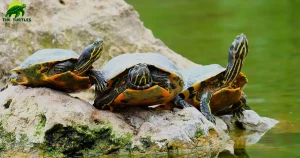
Caring for turtles and terrapins can be really fun, but it’s important to know that they have different needs. Here’s how you can set up their homes, feed them right, and keep them healthy.
Setting Up Their Homes
- Turtles: Turtles need a lot of water to swim in. Sea turtles need big tanks with salty water, while freshwater turtles like a setup that looks like a river or a lake. They both need a dry spot to climb out and bask under a heat lamp.
- Terrapins: Terrapins live in water that is a mix of salty and fresh. They don’t need as much water as turtles, but they do need a place to swim and a dry spot to bask. Their tank should have some hiding spots, too.
What They Eat
- Turtles: Turtles usually eat both plants and animals. Sea turtles may eat lots of greens like algae and seagrass, while freshwater turtles might eat plants, bugs, and small fish.
- Terrapins: Terrapins eat similar foods to freshwater turtles, including plants, bugs, and fish. It’s important to make sure they get a variety of foods to stay healthy.
Keeping Them Healthy
- Turtles: Turtles need clean water and UVB light to stay healthy. The UVB light helps them take in calcium, which keeps their shells strong.
- Terrapins: Terrapins also need clean water and UVB light. They need to have their water and basking area at just the right temperatures to avoid getting sick.
Getting to Know Some Common Species
Famous Turtle Species
- Green Sea Turtle: This big turtle is known for eating seagrass and can be found in oceans.
- Red-Eared Slider: This popular pet turtle has a red mark near its ears and lives in freshwater.
Well-known Terrapin Types
- Diamondback Terrapin: This terrapin has a shell with a diamond pattern and lives in the coastal wetlands of the eastern and southern US.
How to Spot Them in the Wild or in Stores
- Spotting Turtles: Look for creatures with smooth, streamlined shells if they’re in the water, or basking near it. They might have flippers or webbed feet.
- Spotting Terrapins: You can recognize terrapins by their bulkier shells with unique patterns. You’ll find them near the shores of places where salty and fresh water mix, moving between the land and the water.
Read more: Do Turtles Have Emotions?
Wrapping Up
As we finish our journey through the world of these cool shelled creatures, understanding the Difference Between Turtle and Terrapin shows us how special and important they both are. Turtles and terrapins each have their own roles in nature, and knowing about them helps us take better care of our planet.
Turtles are great swimmers and can live in oceans or freshwater places like lakes and rivers. Terrapins like to hang out in brackish water, where saltwater and freshwater mix, and they are good at living both in the water and on land.
If you want to learn more or share what you know with other turtle and terrapin fans, check out Theturtles.info. It’s a place full of information and a community that cares a lot about these animals and wants to protect them.
By understanding the Difference Between Turtle and Terrapin, we can enjoy and respect them more when we see them at beaches, lakes, and rivers. And it helps us remember to look after the places they call home. Let’s keep learning and helping turtles and terrapins! Join us at Theturtles.info to keep learning and helping these awesome animals. Let’s make a difference together!
